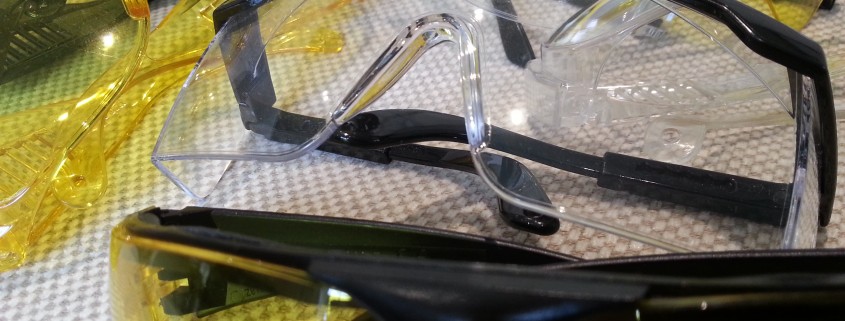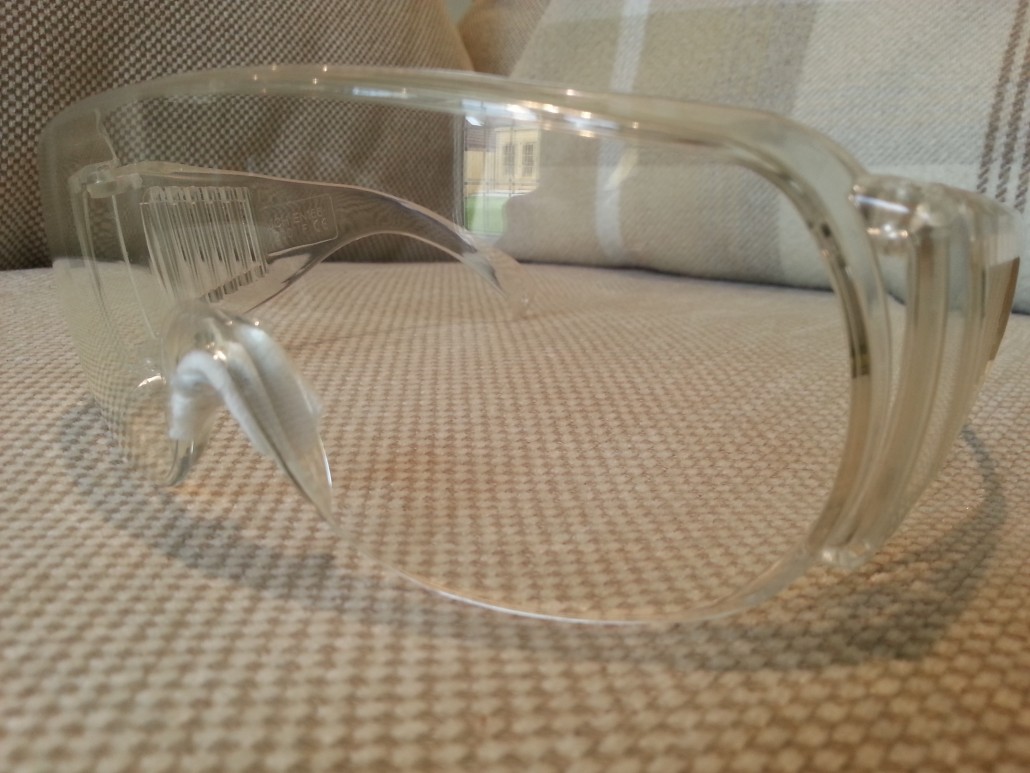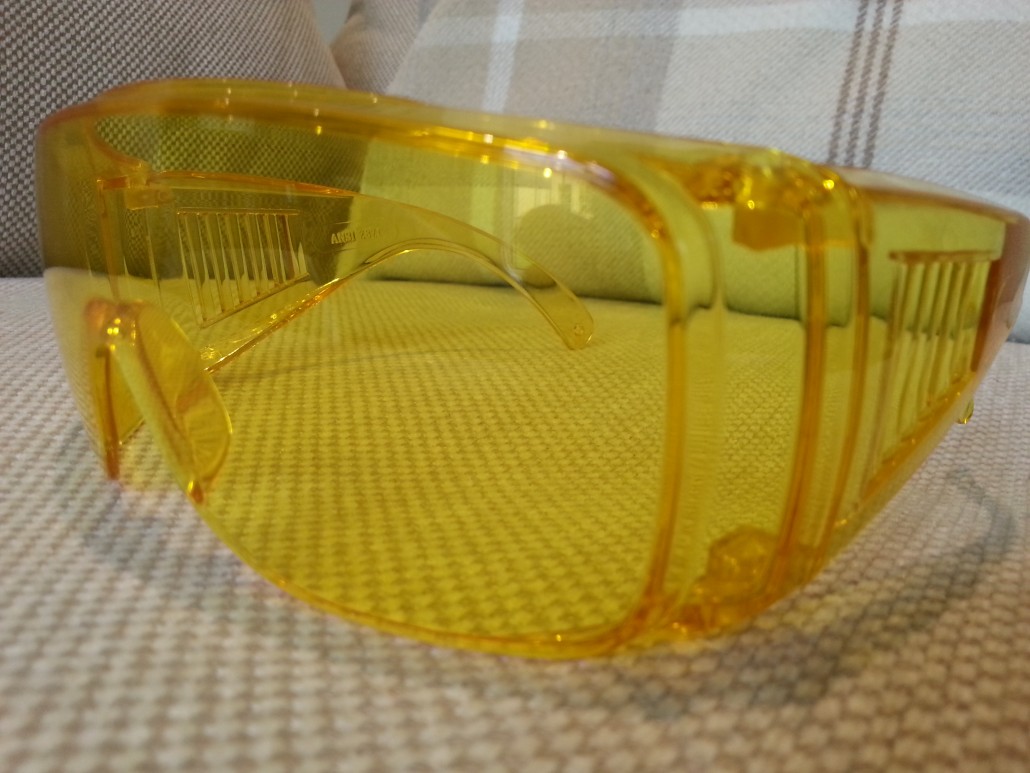Do I Need UV Glasses When Looking For Invisible Pet Stains With UV Flashlights?
UV is an incredibly effective light source for detecting a wide variety of invisible stains, as well as creating some intriguing visuals. Our PeeDar range of specialised UV urine detecting flashlights provide a real bang for your buck, and after seeing the power outputted customers often ask about whether eye protection is required. We decided to try and create a useful resource to refer back to when contemplating the need for UV protection whilst stain hunting with any black light. Please read further for answers to the following 3 bolded questions:
1. Do I need UV glasses when using black lights? The short answer, to what is a complex and still quite a grey area is, yes. It is always better to err on the side of caution. A slightly longer and fuller explanation follows.
UV flashlights are considered to be weak sources of UV compared with direct sunlight or commercial tanning beds. UV wavelengths of 320nm and below are known to be harmful and the wavelengths to really watch out for. Black lights tend to emit longer, much less damaging wavelength light somewhere in the range of 360nm to 405nm, the danger posed by them is considered minimal/non-existent depending upon who you talk to. The obvious question here relates to what ‘minimal’ refers to, as you can imagine the potential for UV damage varies a lot depending upon for example, your skin type (fair, or dark), exposure time and the type and quantity of UV light, amongst many other factors. Due to there being the potential, however small, of damage to eyes from UVA and UVB wavelengths we recommend going with the safest option of wearing a quality pair of 99-100% UV-protective, or UV400 (filters nms of 400 and below), plastic glasses.
Additionally, customers often hear that UV safety spectacles come in tints that actually enhance fluorescence. We investigated this claim and found that this is only the case with less expensive 390+nm UV flashlights. If you bought a PeeDar, or PeeDar 2.0, safety spectacles don’t appear to enhance fluorescence, all tints we tried (amber/brown/rose) actually reduced our ability to see stain glows against their backgrounds. Cheaper UV lights, on the other hand, those that use 390+nm, tend to emit a large amount of strong visible (non-UV) purple light which covers the stain and background with the same intense purple colour, less contrast means stains are harder to detect. If using 390+nm flashlights amber/yellow tinted spectacles are effective at filtering out most of this problematic visible purple light, therefore letting you see stain glow contrasts against their backgrounds. Urine glows under UV usually have a strong light yellow/amber colour and so pass straight through yellow/amber tints. Unfortunately if backgrounds give off a yellowish colour, or there are stains that glow quite differently in color from yellow (e.g. deep reds of orange juice) they may be harder to spot wearing tinted glasses. Deep brown or metallic tints seemed universally useless for stain hunting, simply making vision darker all-round.
When comparing the contrast/detectability of stains under UV from PeeDars with clear UV safety spectacles against cheaper 390+nm flashlights with amber/yellow spectacles we found zero tint to be more useful. The greater quantity of colours let through the lenses meant stains glowed brighter, in more colors and so were generally more contrasting against their backgrounds whatever the surface! We are performing more tests in this area, so keep tuned to our blog if you’re interested to see what we find!
The take home message is use clear UV safety spectacles for black light nanometers below 390nm (i.e. the PeeDar and PeeDar 2.0), use yellow/amber tinted UV spectacles for 390+nm flashlights (in our opinion the less effective option though).
2. What should I look for when purchasing UV safety glasses?
With so many variations of UV-protective spectacles out there it can be difficult to know which ones are suitable for UV stain hunting. Having seen what is on offer, and having tried out a wide range ourselves we have the following key points to look out for, in order of importance:
* Ensure the glasses block out UV effectively. Marks that state 99 or 100% UV protection or UV400 are ideal. The US’s American National Standards Institute (ANSI) and Europe’s Conformité Européene (CE) marks of approval can also provide some assurance that the manufacturer has gone out of their way to remove UV.
You should be able to see the effectiveness of UV filtering by bringing along your black light flashlight with a fluorescent yellow marker pen that glows very strongly under black light UV. In the shop you can simply alternate between shining your black light onto the marker pen through the spectacles and then without. High UV protection should result in a marked/total reduction in fluorescence. Anything other than a very faint hint of a fluorescent glow is likely to mean the UV protection is not adequate. Watch our video below for a demonstration:
Additionally, wide lenses that wrap around your vision, excluding any gaps for UV to reach your eyes are ideal.
* Ensure the UV glasses are well constructed, abiding by well known, stringent safety standards. Again, ANSI and CE marks, preferably with the latest accreditation numbers, are sufficient. Knowing that stringent, well respected standards have been met ensures things like shattering lenses, sharp plastic mold lines, cracked plastic and severe optical warping don’t occur. Also, we tend to prefer plastic over glass lenses, simply due to the much greater value you get for the money you spend. Although this is largely down to personal preference, as both can do a great job at filtering UV, plastics (e.g. polycarbonate, CR39, Trivex) tend to be much lighter, are usually much more impact resistant, can come in a range of colours and as in the case of polycarbonate lenses have built-in UV blocking properties.
* Ensure low visual aberration. Optical clarity, i.e. zero warping/distortion of what you see brought about by lenses that are have irregular thicknesses, is important. Unless you pay a lot for for your safety glasses they will always have some small degree of aberration, but nevertheless locating a pair that has acceptably tiny aberration is key. Aberrations in lenses can cause eye strain, leading to headaches.
* Ensure comfort when being worn. Particularly if you are wearing safety specs for more than a few minutes, purchasing a pair that are comfortable is vital. Key areas to focus on are:
– fit and pressure of the frame on the bridge of your nose
– whether regular prescription glasses easily and comfortably fit under your safety spectacles
– fit and pressure of the frame against the side of your head, resting on your ears
– low fogging potential
3. Can I buy UV-protective glasses from the makers of PeeDar? If not, where can I get good value, effective UV safety spectacles? The manufacturer of the PeeDar range of UV flashlights, Urine Eradication Systems, doesn’t yet make UV protection glasses. We have some great plans for a superior comfort, safe and effective pair of wrap-around UV spectacles. In the meantime, if you’re looking for highly effective, great value UV protection either of the product links below should be more than fit for purpose if you only spend a maximum of 1-2 hours stain hunting per week. We currently use these spectacles for any UV work we do. If you plan on wearing UV filtering spectacles for longer periods of time we recommend you put in a bit more research to purchase a pair with silicone/soft nose bridge inserts and maybe less pressure of the arms on the sides of your head! If you purchase the glasses below and find that the pressure on the nose is uncomfortable what some of our workers do is attach a small bit of tissue paper, using sellotape, to the bridge of the nose section – this seems to remove the issue.
Ideal for wavelengths of 360-390nm (e.g. PeeDar, PeeDar 2.0), clear wrap-around UV safety glasses (note: we’ve attached comfort-improving tissue to the nose bridge!):
http://www.amazon.com/Rugged-Blue-SC-203-Polycarbonate-Visitor/dp/B005QQF4PE/ref=sr_1_102
Ideal for wavelengths of 390+nm, yellow/amber tinted UV safety glasses:
http://www.amazon.com/Calabria-Fit-Over-Safety-Glasses-Protection/dp/B00KRG44L8/ref=sr_1_2
If you have bought any UV safety specs remember that all safety glasses need maintenance to keep them good for many years! Try to regularly:
* clean your glasses immediately after use, following the manufacturer’s instructions. Avoid any potential for scratches, use a super-soft lens-cleaning cloth if you can.
* store uv glasses in a clean, dry place, that can’t be stepped on, ideally in a case.
* always replace scratched, ill-fitting, bent or broken, pitted glasses immediately. Such glasses have reduced UV filtering capabilities, break more easily and interfere with your vision.
* if seeking/able to replace parts, always get identical pieces from the manufacturer, so that the safety rating is still valid!
I hope this article has been an interesting read, and a big help, especially if you’re looking on purchasing a pair of effective inexpensive UV filtering safety glasses. If you have any questions do place them in the comments section!






Very good article and video. Very helpful.